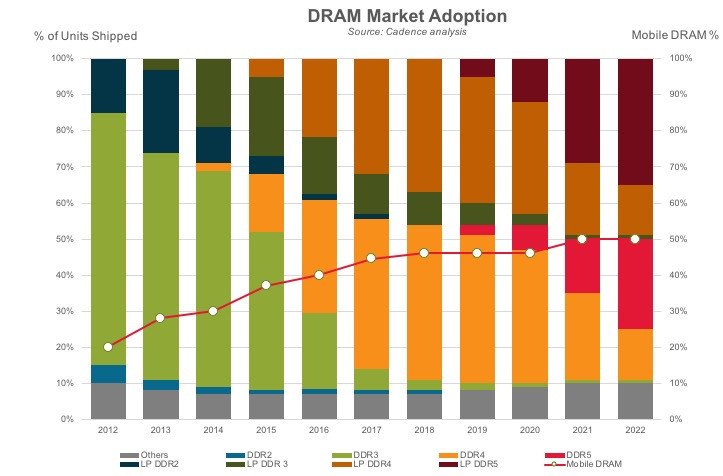Any links to online stores should be assumed to be affiliates. The company or PR agency provides all or most review samples. They have no control over my content, and I provide my honest opinion.
I only switched to a DDR4 based system late last year close to the peak pricing pf memory, things are finally settling down so as you might expect, manufacturers are looking to supplant DDR4 with the next generation DDR5.
Each iteration of DRAM improves clock speed while reducing power consumption and DDR5 is no different. Over its lifespan, DDR5 is expected to operate at speeds of 4266-6400 MT/s, though we can expect high-end DRAM producers like G.Skill and Corsair to overclock the RAM to go even higher still.
The memory is not just faster but the overall performance has been improved when using the same clock speeds. With 3200 MT/s DDR5 memory offering around 36% more real-world bandwidth than DDR4 modules at the same rate. DDR5 memory is designed to run at speeds of around 4800 MT/s, which when compared to 3200 MT/s DDR4 memory will offer a bandwidth increase of approximately 87%, which is a substantial generation-over-generation gain for DDR5.
Furthermore, with the improvement of fabrication processes, DDR5 is set to support monolithic chip densities of over 16Gb, a change which will allow single DRAM modules to offer larger capacities than before. For example, this could allow systems to run 128GB natively without needing to use double density RAM which has just started to hit the market.
DDR4 DRAM is due to go into production next year but the adoption of the memory into consumer systems may take longer, it is possible that we could see some consumer options available late 2019, but more likely 2020. However, Cadence expects DDR5 to quickly replace DDR4 in both the PC, laptop and mobile market, with a large uptake in market share by 2021 and 2022.

As part of the Cadence report, they have shown how mobile RAM has rapidly grown in market share and it now represents close to 50% of all memory, with parity levels expected to hit by 2021.
I am James, a UK-based tech enthusiast and the Editor and Owner of Mighty Gadget, which I’ve proudly run since 2007. Passionate about all things technology, my expertise spans from computers and networking to mobile, wearables, and smart home devices.
As a fitness fanatic who loves running and cycling, I also have a keen interest in fitness-related technology, and I take every opportunity to cover this niche on my blog. My diverse interests allow me to bring a unique perspective to tech blogging, merging lifestyle, fitness, and the latest tech trends.
In my academic pursuits, I earned a BSc in Information Systems Design from UCLAN, before advancing my learning with a Master’s Degree in Computing. This advanced study also included Cisco CCNA accreditation, further demonstrating my commitment to understanding and staying ahead of the technology curve.
I’m proud to share that Vuelio has consistently ranked Mighty Gadget as one of the top technology blogs in the UK. With my dedication to technology and drive to share my insights, I aim to continue providing my readers with engaging and informative content.







